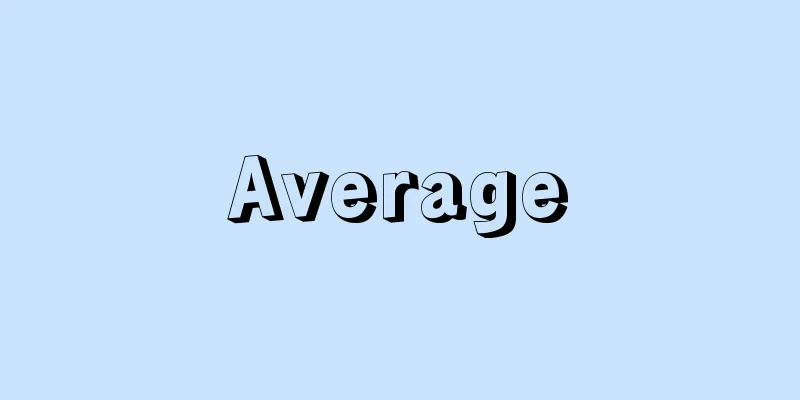Congo Basin

|
A large basin located directly under the equator in central-western Africa. It is also called the Zaïre Basin. It is about 1,600 km north to south and 1,300 km east to west, and has an area of about 3.69 million square kilometers, more than nine times the size of Japan. Of this, the lowland area of the basin is about 500,000 square kilometers. The north is a plateau with an elevation of less than 1,000 meters that continues from Cameroon and Central Africa, the east is a mountain chain including Mount Rwenzori (5,109 meters), a tilted mountain range in the western part of the Great Rift Valley of Africa, and the volcanoes that follow it, the south is a mountain range over 1,000 meters in Angola and the southeastern Democratic Republic of the Congo (formerly Zaire), and the west is the Guinea Highlands that run parallel to the Atlantic coast from Gabon to Angola. The lowest point of the basin is about 300 meters above sea level, located far west of the center of the basin. The geology around the basin consists of bedrock mainly composed of Precambrian metamorphic rocks, on top of which sedimentary rocks (Kundelung Formation) containing Paleozoic glacial deposits, sedimentary rocks (Rubylash Formation) mainly composed of Mesozoic sandstone, and Tertiary layers are distributed to fill the basin. It is thought that until the Tertiary Period of the Cenozoic era, it was a completely inland drainage basin, and it was only in the Quaternary Period that it became possible to drain water to the Atlantic Ocean. Newer alluvial layers have been deposited along the current flow path, cutting through the older alluvial layers (Bushira Formation) that fill the bottom of the basin. [Nobuyuki Hori] Source: Shogakukan Encyclopedia Nipponica About Encyclopedia Nipponica Information | Legend |
|
アフリカ中西部の赤道直下にある大盆地。ザイールZaïre盆地ともいう。南北約1600キロメートル、東西約1300キロメートル、面積は日本の9倍以上の約369万平方キロメートルに達する。このうち盆地の低地部の面積は約50万平方キロメートルである。北部はカメルーン、中央アフリカ両国から続く標高1000メートル以下の高原、東部はアフリカ大地溝帯西部の傾動山塊であるルウェンゾリ山(5109メートル)とそれに続く火山を含む山地列、南部はアンゴラ、コンゴ民主共和国(旧ザイール)南東部の1000メートルを超える山地、西部はガボンからアンゴラにかけて大西洋岸と並走するギニア高地に接している。盆地の最低地は標高約300メートルで、その位置は盆地の中央部からずっと西へ寄っている。 盆地周辺の地質は、先カンブリア紀の変成岩を主体とする基盤岩類からなり、この上に古生代の氷河堆積物(たいせきぶつ)を含む堆積岩(クンデルング層)、中生代の砂岩を中心とする堆積岩(ルビラッシュ層)、第三紀層が盆地を埋めるように分布する。新生代の第三紀まではまったくの内陸排水盆地だったと考えられ、第四紀に入って初めて大西洋側へ排水できるようになったとみられる。盆地底を埋める古期沖積層(ブシーラ層)を切って、現在の流路に沿って新期の沖積層が堆積している。 [堀 信行] 出典 小学館 日本大百科全書(ニッポニカ)日本大百科全書(ニッポニカ)について 情報 | 凡例 |
<<: Democratic Republic of the Congo (English spelling)
>>: Congo Crisis - Kongo Doran
Recommend
Change of name - Kaimei
〘Noun〙① To change one's name. To give one a ne...
valse musette (English spelling) valsemusette
...In addition, pieces of music that imitate the ...
Olympia (English spelling)
The sanctuary of Zeus in the region of Elis in the...
Yaichi Kusube
A ceramic artist from Kyoto. Born in Shirakawa, S...
Eckert, F.
...Around 1869 (Meiji 2), J.W. Fenton, the Britis...
Marathi language - Marathi (English spelling)
A language belonging to the Indo-European branch o...
Battle of Ujigawa
(1) A battle in 1184 between the armies of Minamot...
Qin cāo (English spelling)
A Chinese book on the koto. Written by Cai Yong (c...
Recurrence formula
When there is a sequence of numbers or a sequence ...
Guangzhou commune
In December 1927, under the leadership of the Chi...
Estigarribia, JF - Estigarribia
...World War I brought a lull, but in 1932 a bord...
Nikaido Yukifuji
Year of death: 22 August 1302 (14 September 1302) ...
Communist League (English spelling: Bund der Kommunisten; Communist League)
The first international secret organization of the...
Cow Clock - Ushidokei
… The semantic unit of time in folk societies is ...
Ituri Forest (English spelling)
...Currently, the pygmies are distributed over a ...





![Aya [town] - Aya](/upload/images/67cad9887f261.webp)



